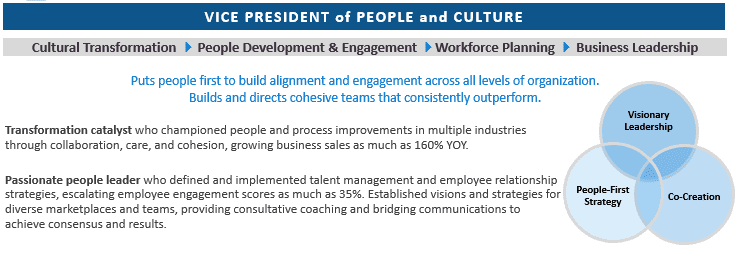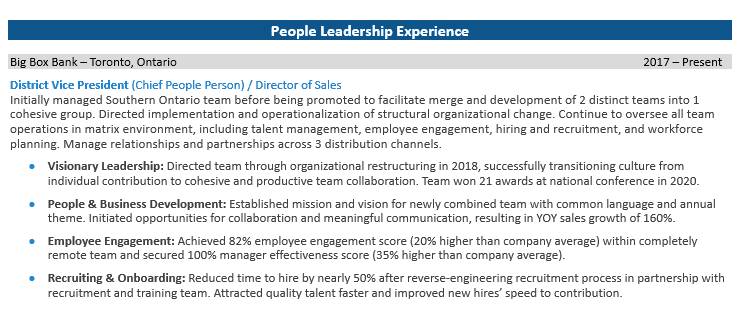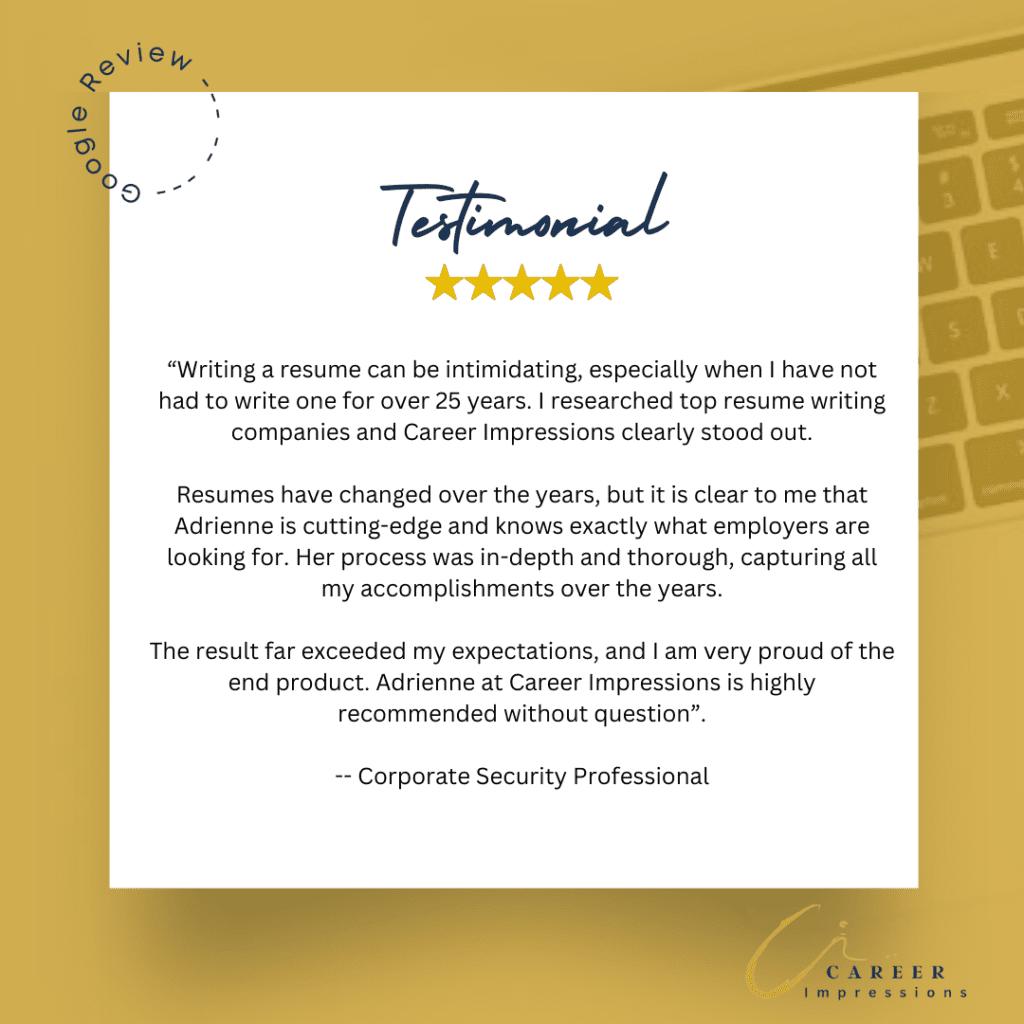
Optimize Your Executive Resume for Career Transition
Transitioning to a new career (or sometimes even just a new industry) at the executive level demands careful planning and strategic execution. An essential component of a successful transition is meticulously customizing the executive resume to highlight relevant skills and experiences in the target industry or role. An executive resume for career transition involves care in both content and delivery. Here are some tips and examples to help get you started.
Research and Identify Transferable Skills
At the executive level, it is crucial to research and identify the transferable skills demanded by your desired industry or role. Identify skills that can seamlessly transition from your previous experiences to the new career path. Emphasize these transferable skills prominently in your resume to demonstrate your capacity for excellence in the new role.
Such skills include leadership acumen, strategic planning expertise, project management proficiency, and exceptional communication. How do you know which skills are in demand? Sample job postings are a good start (scour them carefully for repetitive requirements). Additionally, connect and discuss skills with individuals already working in your target role – or those who hire for the positions – their insights are key.
Craft a Targeted Professional Summary
Revise your professional summary or executive profile at the top of your resume to align with your career transition goals. You want to write the entire resume from the top down for the role you WANT, not the role you have.
Remember to appease the reader. Put yourself in their shoes. What are they looking for? Are you ‘feeding’ them information that will gain their confidence? Does your opening summary share why you are the best fit for their job?
Finally, employ industry-specific language and keywords near the start of the file to exhibit your familiarity with the new field. The professional summary should serve as a succinct snapshot of your executive career, showcasing your unique value proposition and how it aligns with the requirements of the desired role.
In the following summary example, the professional is seeking to transition from the banking industry into a corporate people and culture position. Note how the headline, branding statement, highlighted skills trifecta, and summary all focus on the goal. Banking language is eliminated, target role language and skills are emphasized, and clear examples of success are woven into the content:

Customize Your Skills Section
Evaluate the skills section of your executive resume and customize it to highlight the most relevant and sought-after skills in the new industry or role. Remove or minimize skills that hold less applicability to the target field. At the executive level, a skills section is not always used in a resume, but for career changers, this section affords another opportunity to spotlight pertinent skill sets.
Consider incorporating a subsection dedicated to just technical or industry-specific skills (as required), effectively showcasing your expertise in areas directly related to the desired role.
In the sample below, the same career changer mentioned earlier (banking industry to corporate people and culture) has narrowed the skills on the resume to focus on the target — not the past. This professional has a LOT of skills they could showcase, but instead, they are strategically showcasing only the ones they possess that relate to the target job:

Highlight Relevant Achievements and Projects
Delve into your past experiences and meticulously select accomplishments, projects, and initiatives directly applicable to the target industry or role. The goal is to only share details that matter to the target job. Keep off or minimize anything unrelated.
Focus on highlighting your ability to thrive in the new career path. Quantify achievements using metrics and numbers to illustrate your impact (think: dollars, percentages, timelines, team sizes/ budget sizes, project values, etc.).
Emphasize outcomes that align with the goals and challenges of the desired industry, showcasing adaptability and potential for success.
Once again, the same career changer has ensured the experience section is tailored for the job they want — despite their most recent role being unrelated (in title). Note how they used a creative section header…. put the translated job title in brackets (to demonstrate alignment)…introduced every bullet point with a related skill set….and then provided clear and specific examples of success in the required job areas (with metrics!). Everything in this section backs up the opening summary of their resume and provides proof:

Incorporate Applicable Training and Certifications
If you have pursued pertinent training programs or acquired certifications relevant to your desired industry or role, make these highly visible in the resume. A great place to add these would be near the start of the file (in the summary or qualifications section) and/or within the education or professional development sections.
Ongoing education demonstrates a commitment to continuous learning and a willingness to acquire the necessary skills and knowledge for the new career. Aim to bridge the gap between prior experience and the requirements of the target industry. For example, if you recently completed your MBA or Six Sigma Black Belt and these would benefit the target role — make them easy to spot, don’t bury them deep in the file.
Showcase Relevant Industry Involvement
For top executives navigating career transitions, showcasing your active involvement in the target industry is essential. Include any participation in industry conferences, seminars, or professional associations relevant to your desired field in a separate section. Demonstrate your commitment to staying updated with industry trends and developments.
Additionally, mention any industry-specific publications or thought leadership articles you have authored or contributed to, further establishing your credibility and expertise in the new domain.
———————————————————————————————————————————————————————————————-
Transitioning to a new career at the executive level requires a deliberate and meticulous approach to resume customization. The goal of an executive resume for career transition is to showcase transferable skills and related impacts that position you as a highly qualified candidate to top decision-makers, regardless of prior titles or experiences.
Are you looking for an executive resume for career transition? I can help. Read what a recent senior-level career transition client had to say about our work together:

